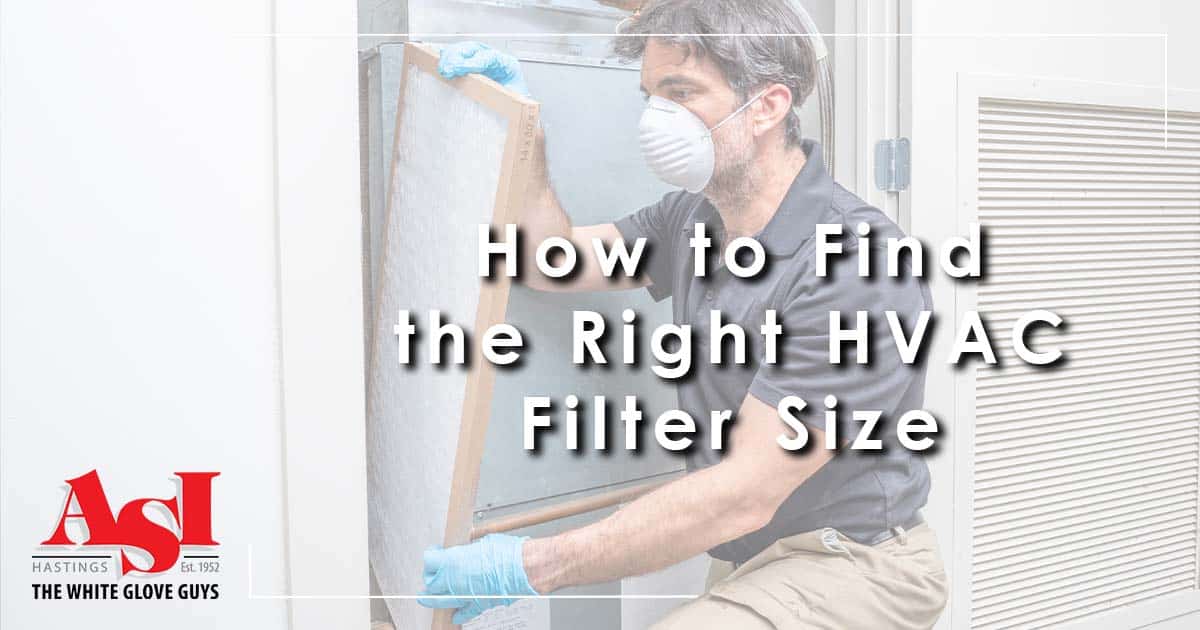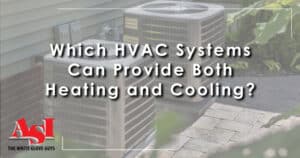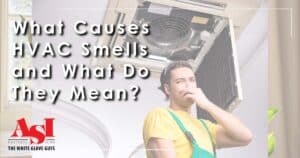
Regular HVAC maintenance is key to keeping your system running smoothly and efficiently. Your air filter is an important part of that. It’s important to keep on eye on the filter since it takes a beating from trapping dander, dust, pollen, and other airborne contaminates.
Changing the air filter is a simple task—provided you know what size and type you need. Otherwise, knowing what filter to get can be overwhelming. This guide will help you determine the best filter for your system and how to make sure you find the right HVAC filter size!
Why Does the HVAC Filter Size Matter?
An air filter that’s too big or too small won’t work well in your HVAC system. If it’s too big and doesn’t fit, you can’t just cut it to size. It will have gaps that allow contaminants to come in and air to go out, which doesn’t help your air quality.

An air filter that’s too small creates the same problem, ultimately taking a toll on your energy efficiency and air quality. This is why it’s crucial to get a properly fitting air filter for your HVAC system.
Look at Your Existing Air Filter
If you still have your old air filter, getting its size is the easiest way to make sure you’re getting the right replacement. Just look at the side of the filter to get the size. Most air filters have print on the side of the frame that lists the length, width, and depth in inches – in that order.
Measure It Yourself
Some air filters don’t have the size printed on the side, making this task more challenging. You can still measure it yourself, however, and determine the length, width, and depth.
Measure Air Register or Air Filter Slot
If your HVAC system is missing an air filter, you can still measure the slot to get the right measurements and find the appropriate replacement.

The air filter slot is the actual air filter size, remember, so the slot may have a slightly smaller measurement than the size of the air filter you need to purchase. And like measuring the air filter itself, you can round up to the nearest inch to get your air filter.
Where Is the Air Filter Located?
Most air filters are found on the return air intake on your HVAC system. Look for the area where the return duct enters your HVAC system and there should be a plate that covers the slot.

Some HVAC systems don’t have air filters in the air handling unit. If this is the case, the air filter is probably near the return vent on the interior of your home. Changing the filter is still simple. All you have to do is open the vent to change the filter.
Know Your Air Filter’s MERV Rating
Size isn’t the only concern with your air filter. You have to find an air filter with the right MERV rating before replacing it. The MERV rating measures how effective the air filter is at filtering out small particles in the air. The higher the rating, the better the filter is at preserving your air quality.
Most homes do well with a MERV rating of 5 to 8. This offers filtration for dander, dust mites, and mold spores, but doesn’t diminish the efficiency of the system. However, you should still replace the filters regularly.
Is your HVAC system ready for a tune-up? Contact the pros at ASI Heating and Air to schedule your appointment!








